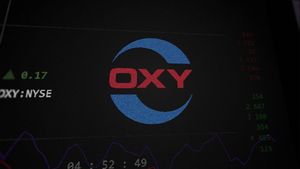
As of October 2025, the global semiconductor industry, poised for unprecedented growth fueled by the insatiable demand for artificial intelligence (AI) and high-performance computing, faces a critical and intensifying shortage of skilled workers that threatens to undermine its ambitious expansion plans and jeopardize global operational stability. Projections indicate a staggering need for over one million additional skilled professionals by 2030 worldwide, with the U.S. alone potentially facing a deficit of 59,000 to 146,000 workers, including 88,000 engineers, by 2029. This widening talent gap is not merely a recruitment challenge; it's an existential threat to an industry projected to near $700 billion in global sales this year and targeted to reach a trillion dollars by 2030.
The immediate significance of this labor crisis is profound, directly impacting the industry's capacity for innovation and its ability to maintain stable production. Despite colossal government investments through initiatives like the U.S. CHIPS Act and the pending EU Chips Act, which aim to onshore manufacturing and bolster supply chain resilience, the lack of a sufficiently trained workforce hampers the realization of these goals. New fabrication facilities and advanced research and development efforts risk underutilization and delays without the necessary engineers, technicians, and computer scientists. The shortfall exacerbates existing vulnerabilities in an already fragile global supply chain, potentially slowing technological advancements across critical sectors from automotive to defense, and underscoring the fierce global competition for a limited pool of highly specialized talent.
The Intricate Web of Skill Gaps and Evolving Demands
The global semiconductor industry is grappling with an escalating and multifaceted skilled worker shortage, a challenge intensified by unprecedented demand, rapid technological advancements, and geopolitical shifts. As of October 2025, industry experts and the AI research community are recognizing AI as a crucial tool for mitigating some aspects of this crisis, even as it simultaneously redefines the required skill sets.
Detailed Skill Gaps and Required Capabilities
The semiconductor industry's talent deficit spans a wide array of roles, from highly specialized engineers to skilled tradespeople, with projections indicating a need for over one million additional skilled workers globally by 2030, equating to more than 100,000 annually. In the U.S. alone, a projected shortfall of 67,000 workers in the semiconductor industry is anticipated by 2030 across technicians, computer scientists, and engineers.
Specific skill gaps include:
- Engineers: Electrical Engineers (for chip design and tools), Design Engineers (IC Design and Verification, requiring expertise in device physics, design automation), Process Engineers (for manufacturing, focusing on solid-state physics), Test Engineers and Yield Analysis Specialists (demanding skills in automation frameworks like Python and big data analytics), Materials Scientists (critical for 3D stacking and quantum computing), Embedded Software and Firmware Engineers, Industrial Engineers, Computer Scientists, and Security and Trusted ICs Specialists.
- Technicians: Fabrication Line Operators, Area Operators, and Maintenance Services Technicians are vital for day-to-day fab operations, often requiring certificates or two-year degrees. The U.S. alone faces a projected shortage of 39% for technicians by 2030.
- Skilled Tradespeople: Electricians, pipefitters, welders, and carpenters are in high demand to construct new fabrication plants (fabs).
- Leadership Roles: A need exists for second-line and third-line leaders, many of whom must be recruited from outside the industry due to a shrinking internal talent pool and regional skill set disparities.
Beyond these specific roles, the industry increasingly requires "digital skills" such as cloud computing, AI, and analytics across design and manufacturing. Employees need to analyze data outputs, troubleshoot anomalies, and make real-time decisions informed by complex AI models, demanding literacy in machine learning, robotics, data analytics, and algorithm-driven workflows.
How This Shortage Differs from Previous Industry Challenges
The current semiconductor skill shortage is distinct from past cyclical downturns due to several compounding factors:
- Explosive Demand Growth: Driven by pervasive technologies like artificial intelligence, electric vehicles, data centers, 5G, and the Internet of Things, the demand for chips has skyrocketed, creating an unprecedented need for human capital. This differs from past cycles that were often more reactive to market fluctuations rather than sustained, exponential growth across multiple sectors.
- Geopolitical Reshoring Initiatives: Government initiatives, such as the U.S. CHIPS and Science Act and the European Chips Act, aim to localize and increase semiconductor manufacturing capacity. This focus on building new fabs in regions with diminished manufacturing workforces exacerbates the talent crunch, as these areas lack readily available skilled labor. This contrasts with earlier periods where manufacturing largely moved offshore, leading to an erosion of domestic competencies.
- Aging Workforce and Dwindling Pipeline: A significant portion of the current workforce is approaching retirement (e.g., one-third of U.S. semiconductor employees were aged 55 or over in 2023, and 25-35% of fabrication line operators are likely to retire by 2025). Concurrently, there's a declining interest and enrollment in semiconductor-focused STEM programs at universities, and only a small fraction of engineering graduates choose careers in semiconductors. This creates a "talent cliff" that makes replacing experienced workers exceptionally difficult.
- Rapid Technological Evolution: The relentless pace of Moore's Law and the advent of advanced technologies like AI, advanced packaging, and new materials necessitate constantly evolving skill sets. The demand for proficiency in AI, machine learning, and advanced automation is relatively new and rapidly changing, creating a gap that traditional educational pipelines struggle to fill quickly.
- Intense Competition for Talent: The semiconductor industry is now in fierce competition with other high-growth tech sectors (e.g., AI, clean energy, medical technology, cybersecurity) for the same limited pool of STEM talent. Many students and professionals perceive consumer-oriented tech companies as offering more exciting jobs, higher compensation, and better career development prospects, making recruitment challenging for semiconductor firms.
Initial Reactions from the AI Research Community and Industry Experts (October 2025)
As of October 2025, the AI research community and industry experts largely view AI as a critical, transformative force for the semiconductor industry, though not without its own complexities and challenges. Initial reactions have been overwhelmingly positive, with AI being hailed as an "indispensable tool" and a "game-changer" for tackling the increasing complexity of modern chip designs and accelerating innovation. Experts believe AI will augment human capabilities rather than simply replace them, acting as a "force multiplier" to address the talent shortage, with some studies showing nearly a 50% productivity gain in man-hours for chip design. This shift is redefining workforce capabilities, increasing demand for AI, software development, and digital twin modeling expertise. However, geopolitical implications, such as the costs associated with onshoring manufacturing, remain a complex issue, balancing supply chain resilience with economic viability.
Navigating the Competitive Landscape: Who Wins and Who Struggles
The global semiconductor industry is grappling with a severe skill shortage as of October 2025, a challenge that is profoundly impacting AI companies, tech giants, and startups alike. This talent deficit, coupled with an insatiable demand for advanced chips driven by artificial intelligence, is reshaping competitive landscapes, disrupting product development, and forcing strategic shifts in market positioning.
Impact on AI Companies, Tech Giants, and Startups
AI Companies are at the forefront of this impact due to their immense reliance on cutting-edge semiconductors. The "AI supercycle" has made AI the primary growth driver for the semiconductor market in 2025, fueling unprecedented demand for specialized chips such as Graphics Processing Units (GPUs), Application-Specific Integrated Circuits (ASICs), and High Bandwidth Memory (HBM). The skill shortage exacerbates the challenge of developing new AI innovations and custom silicon solutions, as the specialized expertise required for these advanced chips is in extremely limited supply.
Tech Giants, which include major AI labs, are engaging in intense competition for the limited pool of talent. They are offering increasingly attractive compensation packages and benefits, driving up wages across the industry, especially for experienced engineers and technicians. Many are making significant investments in AI-optimized chips and advanced packaging technologies. However, the push for onshoring manufacturing, often spurred by government incentives like the U.S. CHIPS Act, means these giants also face pressure to source talent locally, further intensifying domestic talent wars. Complex export controls and geopolitical tensions add layers of difficulty, increasing production costs and potentially limiting market access.
Startups are particularly vulnerable to the semiconductor skill shortage. While the broader AI sector is booming with investment, smaller companies often struggle to compete with tech giants for scarce AI and semiconductor engineering talent. In countries like China, AI startups report that critical R&D roles remain unfilled for months, significantly slowing product development and hindering their ability to innovate and scale. This stifles their growth potential and ability to introduce disruptive technologies.
Companies Standing to Benefit or Be Most Impacted
Beneficiaries in this environment are primarily companies with established leadership in AI hardware and advanced manufacturing, or those strategically positioned to support the industry's shift.
- NVIDIA (NASDAQ: NVDA) continues to be a major beneficiary, solidifying its position as the "AI hardware kingpin" due to its indispensable GPUs for AI model training and data centers, along with its robust CUDA platform. Its Blackwell AI chips are reportedly sold out for 2025.
- Taiwan Semiconductor Manufacturing Company (TSMC) (NYSE: TSM), as the world's leading foundry for advanced chips, benefits immensely from the sustained demand from AI leaders like NVIDIA and Apple (NASDAQ: AAPL). Its technological leadership in process nodes and advanced packaging, such as CoWoS, is critical, with AI-related applications accounting for a substantial portion of its revenue.
- Advanced Micro Devices (AMD) (NASDAQ: AMD) is making a strong push into the AI accelerator market with its Instinct MI350 series GPUs, projecting significant AI-related revenue for 2025.
- Marvell Technology (NASDAQ: MRVL) is capitalizing on the AI boom through custom silicon solutions for data centers and networking.
- Companies providing embedded systems and software development for nascent domestic semiconductor industries, such as Tata Elxsi (NSE: TATAELXSI) in India, are also poised to benefit from government initiatives aimed at fostering local production.
- Talent solutions providers stand to gain as semiconductor companies increasingly seek external support for recruitment and workforce development.
Conversely, companies most impacted are those with significant exposure to slowing markets and those struggling to secure talent.
- Chipmakers heavily reliant on the automotive and industrial sectors are facing considerable headwinds, experiencing an "oversupply hangover" expected to persist through 2025, leading to reduced order volumes and challenges in managing inventory. Examples include NXP Semiconductors (NASDAQ: NXPI) and Infineon Technologies (ETR: IFX).
- Companies that rely heavily on external foundries like TSMC will bear the brunt of rising production costs for advanced chips due to increased demand and investment in new capacity.
- New fabrication facilities planned or under construction in regions like the U.S. face significant delays in production commencement due to the lack of a robust pipeline of skilled workers. TSMC's Arizona fab, for instance, had to bring in skilled laborers from Taiwan to accelerate its progress.
Competitive Implications for Major AI Labs and Tech Companies
The semiconductor skill shortage creates several competitive pressures: intensified talent wars, the emergence of new competitors blurring industry lines, strategic advantages through supply chain resilience, and geopolitical influence reshaping investment flows and technological roadmaps.
Potential Disruption to Existing Products or Services
The skill shortage, combined with supply chain vulnerabilities, poses several disruption risks: delayed product development and rollout, increased costs for electronics, operational bottlenecks, slower innovation, and supply chain adjustments due to regionalization efforts.
Market Positioning and Strategic Advantages
In response to these challenges, companies are adopting multifaceted strategies to enhance their market positioning: aggressive workforce development (e.g., Intel (NASDAQ: INTC) and TSMC investing millions in local talent pipelines), diversification and regionalization of supply chains, strategic R&D and capital expenditure towards high-growth AI areas, leveraging AI for design and operations (e.g., startups like Celera Semiconductor), and collaboration and ecosystem building.
Broader Implications: National Security, Economic Growth, and AI's Future
The global semiconductor industry is experiencing a severe and escalating skilled labor shortage as of October 2025, with profound implications across various sectors, particularly for the burgeoning field of Artificial Intelligence (AI). This talent gap threatens to impede innovation, compromise national security, and stifle economic growth worldwide.
Current State of the Semiconductor Skill Shortage (October 2025)
The semiconductor industry, a critical foundation for the global technology ecosystem, faces a significant labor crisis. Demand for semiconductors is skyrocketing due to the rapid growth of AI applications, 5G, automotive electrification, and data centers. However, this increased demand is met with a widening talent gap. Projections indicate that over one million additional skilled workers will be needed globally by 2030. Key factors include an aging workforce, declining STEM enrollments, high demand for specialized skills, and geopolitical pressures for "chip sovereignty." The U.S. alone is projected to face a shortage of between 59,000 and 146,000 workers by 2029.
Fit into the Broader AI Landscape and Trends
The semiconductor skill shortage poses a direct and formidable threat to the future of AI development and its transformative potential. Advanced semiconductors are the fundamental building blocks for AI. Without a steady supply of high-performance AI chips and the skilled professionals to design, manufacture, and integrate them, the progress of AI technology could slow considerably, leading to production delays, rising costs, and bottlenecks in AI innovation. While AI itself is being explored as a tool to mitigate the talent gap within the semiconductor industry, its implementation requires its own set of specialized skills, which are also in short supply.
Societal Impacts
The semiconductor skill shortage has widespread societal implications: disruption of daily life and technology adoption (higher prices, limited access), potential economic inequality due to uneven access to advanced AI technologies, and impacts on other emerging technologies like IoT, 5G/6G, and autonomous vehicles.
Potential Concerns
- National Security: Semiconductors are critical for modern defense technologies. A reliance on foreign supply chains for these components poses significant national security risks, potentially compromising military capabilities and critical infrastructure.
- Economic Growth and Competitiveness: The talent deficit directly threatens economic growth by hindering innovation, reducing manufacturing productivity, and making it harder for countries to compete globally.
- Geopolitical Instability: The global competition for semiconductor talent and manufacturing capabilities contributes to geopolitical tensions, particularly between the U.S. and China.
Comparisons to Previous AI Milestones and Breakthroughs
The current semiconductor talent crisis, intertwined with the AI boom, presents unique challenges. Unlike earlier AI milestones that might have been more software-centric, the current deep learning revolution is heavily reliant on advanced hardware, making the semiconductor manufacturing workforce a foundational bottleneck. The speed of demand for specialized skills in both semiconductor manufacturing and AI application is unprecedented. Furthermore, geopolitical efforts to localize manufacturing fragment existing talent pools, and the industry faces the additional hurdle of an aging workforce and a perception problem that makes it less attractive to younger generations.
The Road Ahead: Innovations, Challenges, and Expert Predictions
The global semiconductor industry is confronting an intensifying and persistent skilled worker shortage, a critical challenge projected to escalate in the near and long term, impacting its ambitious growth trajectory towards a trillion-dollar market by 2030. As of October 2025, experts warn that without significant intervention, the talent gap will continue to widen, threatening innovation and production capacities worldwide.
Expected Near-Term and Long-Term Developments
In the near-term (2025-2027), demand for engineers and technicians is expected to see a steep increase, with annual demand growth for engineers jumping from 9,000 to 17,000, and technician demand doubling from 7,000 to 14,000. This demand is forecasted to peak in 2027. Long-term (2028-2030 and beyond), the talent shortage is expected to intensify before it improves, with a potential talent gap in the U.S. ranging from approximately 59,000 to 146,000 workers by 2029. While various initiatives are underway, they are unlikely to fully close the talent gap.
Potential Applications and Use Cases on the Horizon
To mitigate the skill shortage, the semiconductor industry is increasingly turning to innovative solutions:
- AI and Machine Learning in Manufacturing: AI and ML are emerging as powerful tools to boost productivity, facilitate swift onboarding for new employees, reduce learning curves, codify institutional knowledge, and automate routine tasks. Generative AI (GenAI) is also playing an increasing role.
- New Educational Models and Industry-Academia Collaboration: Companies are partnering with universities and technical schools to develop specialized training programs (e.g., Purdue University's collaboration with VMS Solutions), establishing cleanroom simulators (like at Onondaga Community College), engaging students earlier, and forming government-academia-industry partnerships.
Challenges That Need to Be Addressed
Several significant challenges contribute to the semiconductor skill shortage: an aging workforce and declining STEM enrollments, a perception problem making the industry less attractive than software companies, evolving skill requirements demanding hybrid skill sets, intense competition for talent, geopolitical and immigration challenges, and inconsistent training and onboarding processes.
Expert Predictions
Industry experts and analysts predict that the semiconductor talent crisis will continue to be a defining factor. The shortage will likely intensify before improvement, requiring a fundamental paradigm shift in workforce development. Government initiatives, while providing funding, must be wisely invested in workforce development. AI will augment, not replace, engineers. Increased collaboration between industry, governments, and educational institutions is essential. Companies prioritizing strategic workforce planning, reskilling, automation, and AI adoption will be best positioned for long-term success.
A Critical Juncture for AI and the Global Economy
As of October 2025, the global semiconductor industry continues to grapple with a severe and intensifying shortage of skilled workers, a challenge that threatens to impede innovation, slow economic growth, and significantly impact the future trajectory of artificial intelligence (AI) development. This pervasive issue extends across all facets of the industry, from chip design and manufacturing to operations and maintenance, demanding urgent and multifaceted solutions from both public and private sectors.
Summary of Key Takeaways
The semiconductor skill shortage is a critical and worsening problem, with projections indicating a daunting 50% engineer shortage by 2029 and over one million additional skilled workers needed by 2030. This deficit stems from an aging workforce, a lack of specialized graduates, insufficient career advancement opportunities, and intense global competition. Responses include expanding talent pipelines, fostering industry-academia relationships, leveraging niche recruiting, implementing comprehensive workforce development, and offering competitive compensation. Geopolitical initiatives like the U.S. CHIPS Act further highlight the need for localized skilled labor.
Significance in AI History
The current skill shortage is a significant development in AI history because AI's "insatiable appetite" for computational power has made the semiconductor industry foundational to its progress. The projected $800 billion global semiconductor market in 2025, with AI chips alone exceeding $150 billion in sales, underscores this reliance. A shortage of skilled professionals directly threatens the pace of innovation in chip design and manufacturing, potentially slowing the development and deployment of next-generation AI solutions and impacting the broader digital economy's evolution.
Final Thoughts on Long-Term Impact
The semiconductor skill shortage is not a fleeting challenge but a long-term structural problem. Without sustained and aggressive interventions, the talent gap is expected to intensify, creating a significant bottleneck for innovation and growth. This risks undermining national strategies for technological leadership and economic prosperity, particularly as countries strive for "chip sovereignty." The long-term impact will likely include increased production costs, delays in bringing new technologies to market, and a forced prioritization of certain technology segments. Creative solutions, sustained investment in education and training, and global collaboration are essential.
What to Watch for in the Coming Weeks and Months
In the immediate future, several key areas warrant close attention: the actionable strategies emerging from industry and government collaboration forums (e.g., "Accelerating Europe's Tech Advantage"), the impact of ongoing geopolitical developments on market volatility and strategic decisions, the balance between AI-driven demand and slowdowns in other market segments, the practical implementation and early results of new workforce development initiatives, and continued technological advancements in automation and AI-enabled tools to streamline chip design and manufacturing processes.
This content is intended for informational purposes only and represents analysis of current AI developments.
TokenRing AI delivers enterprise-grade solutions for multi-agent AI workflow orchestration, AI-powered development tools, and seamless remote collaboration platforms.
For more information, visit https://www.tokenring.ai/.





